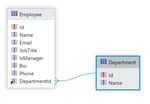Market-ready solutions from the Innominds' DevOps team enables CI/CD implementation for secure public and private Blockchain transactions framework
While working on a large software development project with multiple people working on different parts of the code, the process of integrating branches of code into the mainline/trunk gets pushed to the end. This makes the code integration extremely complex and can potentially cause build fails.
Code changes along the software development life cycle are not entirely without error. If they diverge far from the main branch of code, it sometimes causes regression errors or build failures, which then affects the release of the product. The idea that architectural changes can contribute to product development success is backed up by research; Which introduced the practices of ‘agile’ development and the concept of ‘fail fast’ development.
This entire process is now called Continuous Integration (CI). CI runs a set of automated tests before and after code merges. These recurring tests allow the technical team to introduce many iterations to the software by identifying errors early on in the development. And the process of deploying changes with each new build is called Continuous Delivery (CD).
A blockchain venture that provides enterprises with solutions to manage pricing and related services required an infrastructure reassessment with DevOps implementation. They approached Innominds to help with establishing a stable and enhanced framework of development and operations through CI/CD implementations.
In time, the client hoped to enhance the business performance by reducing the labor and infrastructure costs through the smart application of Innominds’ Continuous Engineering services.
The major challenges faced by the client in maintaining the blockchain framework were:
- Decreased team productivity due to last-minute iterations and fragmented testing processes
- Long-drawn deployments and severe downtimes
- Issues with releases prompting roll-backs
- Poor code quality with no room for quick code correction
Implementing Continuous Integration (CI) and Continuous Delivery (CD) with Visual Analytics
The client wanted an end-to-end solution for the design, test, management, and administration of the entire spectrum of the SDLC up until the go-to-market. Our DevOps team needed to implement CI/CD by creating automated test sets, unit tests, and maintenance suits.
The solution also needed an easy interface to work with as we deployed dashboards and modern visualization for analytics and more. Innominds sought to thoroughly implement the CI/CD methodology by reforming the development and delivery workflow and culture of the client.
-1.png?width=900&name=MicrosoftTeams-image%20(18)-1.png)
But first, let's understand the differences between the commonly confused terms continuous integration, continuous delivery, and continuous deployment.
Difference between Continuous Integration (CI) and Continuous Delivery and Deployment (CD)
Continuous Integration and Continuous Delivery are two very recent terms frequently used in modern development practices and hence can be confusing to understand in relation to each other.
While CI stands for Continuous Integration -as discussed earlier- is the concept of regularly integrating code changes with the mainline of code, and testing them for overall build integrity, CD can mean either continuous delivery or continuous deployment.
Continuous Integration
Merging any iterations into the main branch of code can potentially disrupt the release process and date. Therefore, CI is employed in a DevOps environment for regular runs of tests before and after the merges. CI usually entails the following processes:
-Daily merges: Ensure daily merges to follow a ‘fail fast’ method.
-Frequent unit tests: The most convenient place to start in executing regular tests would be to automate the unit tests and run them with each high-important functionality.
Continuous Delivery
Continuous delivery is the process of enabling the deployment of new changes into the production environment with automation.
Continuous Deployment
Continuous deployment allows the product to be released to the public without human intervention. Automated deployments can save time in releasing changes such as an improved feature or fixing of bugs.
Achieving faster time to market by establishing a new methodology of working through DevOps Maturity Model Assessments and CI/CD implementations
-3.png?width=1297&name=MicrosoftTeams-image%20(19)-3.png)
The new developments through a CI/CD pipeline enabled public and private transactions for the blockchain application, impacting:
- Developer productivity
- Delivery culture and performance
- Build quality improvement
- Better management
Our maturity assessment model can aggrandize an organization’s present digital transformation efforts to the adoption of industry-leading cloud and DevOps practices and protocols.
Hence, we aided the delivery, development, and management of software applications by implementing a DevOps toolchain by deploying the market-best tools for the CI/CD pipeline.
Additionally, the client was enabled with a flexible blockchain framework with IBM Hyperledger platform for public and private transactions.
The client’s digital transformation initiative was accelerated with the new cloud and DevOps model and practices, achieving the following results:
- More than 20% improvement in development productivity
- Marked reduction in server downtime
- Significant reduction in deployment issues and product roll-backs
- Improved code quality with the help of advanced analytics and dashboards
To learn more about how Innominds implemented DevOps with CI/CD for the client, download this case study.


-3.jpg?width=5104&name=MicrosoftTeams-image%20(17)-3.jpg)

-Aug-12-2021-11-05-02-92-AM.png?width=150&height=150&name=MicrosoftTeams-image%20(13)-Aug-12-2021-11-05-02-92-AM.png)
